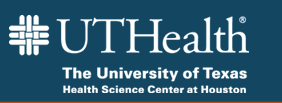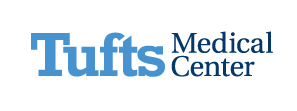Surfactant Positive Airway Pressure and Pulse Oximetry Trial
| Status: | Completed |
|---|---|
| Conditions: | Bronchitis, Ocular, Women's Studies |
| Therapuetic Areas: | Ophthalmology, Pulmonary / Respiratory Diseases, Reproductive |
| Healthy: | No |
| Age Range: | Any |
| Updated: | 10/27/2017 |
| Start Date: | February 2005 |
| End Date: | August 2016 |
Surfactant Positive Airway Pressure and Pulse Oximetry Trial (SUPPORT) in Extremely Low Birth Weight Infants
This study compared the use of continuous positive airway pressure initiated at birth with
the early administration of surfactant administered through a tube in the windpipe within 1
hour of birth for premature infants born at 24 to 27 weeks gestation. In addition, these
infants within 2 hours of birth, had a special pulse oximeter placed to continuously monitor
their oxygen saturation in two different target ranges (85-89% or 91-95%). This study helped
determine whether or not these two management strategies affect chronic lung disease and
survival of premature infants.
the early administration of surfactant administered through a tube in the windpipe within 1
hour of birth for premature infants born at 24 to 27 weeks gestation. In addition, these
infants within 2 hours of birth, had a special pulse oximeter placed to continuously monitor
their oxygen saturation in two different target ranges (85-89% or 91-95%). This study helped
determine whether or not these two management strategies affect chronic lung disease and
survival of premature infants.
Study subjects were infants of 24 0/7ths to 27 6/7th weeks at birth for which a decision has
been made to provide full resuscitation as required. Infants 27 weeks or less gestation
(completed weeks by best obstetric estimate) were enrolled because more than 80% of such
infants in the Network are intubated, usually early in their neonatal course. The feasibility
trial demonstrated that the five NICHD centers involved could reduce intubation in the
delivery room to less than 50% of such infants if they are not intubated for surfactant. We
excluded infants of 23 weeks or less in view of their extremely high mortality and morbidity,
and their almost universal need for delivery room intubation for resuscitation. Secondary
studies included: neuroimaging/MRI, growth, and breathing outcomes.
Strata: There were two randomization strata, infants of 24 0/7ths to 25 6/7ths weeks, and
infants of 26 0/7ths-27 6/7ths weeks by best obstetrical estimate.
Randomization:
Randomization was stratified by gestational age group, occurred prior to delivery for
consented deliveries, and was performed by utilizing specially prepared double-sealed
envelopes. Deliveries were randomized as a unit, thus multiples, twins, triplets, etc. were
randomized to the same arm of the trial.
Informed Consent:
Parents were approached prior to delivery for informed consent, and their infants enrolled at
delivery.
Study Intervention: Mode of Ventilatory Support The intervention began after birth when the
infant was given to the resuscitation team. The conduct of the resuscitation followed usual
guidelines, and once stabilized, all Control infants in both strata received
prophylactic/early surfactant (within one hour of age), whereas all Treatment infants were
placed on CPAP/PEEP following stabilization, and were intubated only for resuscitation
indications.
Pulse Oximeter Allocation:
Infants were randomized to receive either a high- or low-saturation of peripheral oxygen
(SpO2) as monitored by a study oximeter immediately following NICU admission, with a maximum
allowable delay of two hours following admission.
The SUPPORT Trial recruitment was temporarily paused on November 23, 2005 based on concern
regarding pulse oximeter readings > 95% and due to concern regarding separation of the two
arms of the oximetry portion of the study. Further analyses were performed which showed that
infants on room air accounted for a significant portion of pulse oximetry saturations above
95%. Separation of the two groups was reanalyzed based on time spent in room air and the
duration of time spent at individual SpO2 values, which both showed group differences. The
trial was restarted on February 6, 2006.
Follow-up: Subjects will be seen for a follow-up visit at 18-22 months corrected age to look
at neurodevelopment.
Extended follow-up: Subjects enrolled in the Neuroimaging/MRI secondary study will also be
seen for a follow-up visit at 6-7 years to look at later school-age development. Subjects
attending the 6-7 year follow-up visit will be invited to participate in this secondary study
which will analyze the relationship of salivary cortisol and dehydroepiandrosterone (DHEA)
to: (a) blood pressure and adiposity; (b) prenatal and postnatal growth; and (c) DNA
methylation patterns.
been made to provide full resuscitation as required. Infants 27 weeks or less gestation
(completed weeks by best obstetric estimate) were enrolled because more than 80% of such
infants in the Network are intubated, usually early in their neonatal course. The feasibility
trial demonstrated that the five NICHD centers involved could reduce intubation in the
delivery room to less than 50% of such infants if they are not intubated for surfactant. We
excluded infants of 23 weeks or less in view of their extremely high mortality and morbidity,
and their almost universal need for delivery room intubation for resuscitation. Secondary
studies included: neuroimaging/MRI, growth, and breathing outcomes.
Strata: There were two randomization strata, infants of 24 0/7ths to 25 6/7ths weeks, and
infants of 26 0/7ths-27 6/7ths weeks by best obstetrical estimate.
Randomization:
Randomization was stratified by gestational age group, occurred prior to delivery for
consented deliveries, and was performed by utilizing specially prepared double-sealed
envelopes. Deliveries were randomized as a unit, thus multiples, twins, triplets, etc. were
randomized to the same arm of the trial.
Informed Consent:
Parents were approached prior to delivery for informed consent, and their infants enrolled at
delivery.
Study Intervention: Mode of Ventilatory Support The intervention began after birth when the
infant was given to the resuscitation team. The conduct of the resuscitation followed usual
guidelines, and once stabilized, all Control infants in both strata received
prophylactic/early surfactant (within one hour of age), whereas all Treatment infants were
placed on CPAP/PEEP following stabilization, and were intubated only for resuscitation
indications.
Pulse Oximeter Allocation:
Infants were randomized to receive either a high- or low-saturation of peripheral oxygen
(SpO2) as monitored by a study oximeter immediately following NICU admission, with a maximum
allowable delay of two hours following admission.
The SUPPORT Trial recruitment was temporarily paused on November 23, 2005 based on concern
regarding pulse oximeter readings > 95% and due to concern regarding separation of the two
arms of the oximetry portion of the study. Further analyses were performed which showed that
infants on room air accounted for a significant portion of pulse oximetry saturations above
95%. Separation of the two groups was reanalyzed based on time spent in room air and the
duration of time spent at individual SpO2 values, which both showed group differences. The
trial was restarted on February 6, 2006.
Follow-up: Subjects will be seen for a follow-up visit at 18-22 months corrected age to look
at neurodevelopment.
Extended follow-up: Subjects enrolled in the Neuroimaging/MRI secondary study will also be
seen for a follow-up visit at 6-7 years to look at later school-age development. Subjects
attending the 6-7 year follow-up visit will be invited to participate in this secondary study
which will analyze the relationship of salivary cortisol and dehydroepiandrosterone (DHEA)
to: (a) blood pressure and adiposity; (b) prenatal and postnatal growth; and (c) DNA
methylation patterns.
Inclusion Criteria:
- Infants with a minimal gestational age of 24 weeks 0 days to 27 completed weeks (up to
27 6/7ths) by best obstetrical estimate
- Infants who will receive full resuscitation as necessary, i.e., no parental request or
physician decision to forego resuscitation
- Infants whose parents/legal guardians have provided consent for enrollment, or
- Infants without known major congenital malformations
Exclusion Criteria:
- Any infant transported to the center after delivery
- Infants whose parents/legal guardians refuse consent
- Infants born during a time when the research apparatus/study personnel are not
available
- Infants < 24 weeks 0 days or > 28 weeks 0 days, completed weeks of gestation
We found this trial at
22
sites
University of Alabama at Birmingham The University of Alabama at Birmingham (UAB) traces its roots...
Click here to add this to my saved trials
Emory University Emory University, recognized internationally for its outstanding liberal artscolleges, graduate and professional schools,...
Click here to add this to my saved trials
Tufts Medical Center Tufts Medical Center is an internationally-respected academic medical center – a teaching...
Click here to add this to my saved trials
Univ of Texas, Southwestern Med Ctr of Dallas The story of UT Southwestern Medical Center...
Click here to add this to my saved trials
Wayne State University Founded in 1868, Wayne State University is a nationally recognized metropolitan research...
Click here to add this to my saved trials
Click here to add this to my saved trials
Duke University Younger than most other prestigious U.S. research universities, Duke University consistently ranks among...
Click here to add this to my saved trials
7000 Fannin St
Houston, Texas 77030
Houston, Texas 77030
(713) 500-4472

University of Texas Health Science Center at Houston The University of Texas Health Science Center...
Click here to add this to my saved trials
Indiana University INDIANA UNIVERSITY is a major multi-campus public research institution, grounded in the liberal...
Click here to add this to my saved trials
University of Iowa With just over 30,000 students, the University of Iowa is one of...
Click here to add this to my saved trials
Click here to add this to my saved trials
University of Miami A private research university with more than 15,000 students from around the...
Click here to add this to my saved trials
Click here to add this to my saved trials
University of Rochester The University of Rochester is one of the country's top-tier research universities....
Click here to add this to my saved trials
University of Utah Research is a major component in the life of the U benefiting...
Click here to add this to my saved trials
University of New Mexico Founded in 1889 as New Mexico’s flagship institution, the University of...
Click here to add this to my saved trials
Click here to add this to my saved trials
Click here to add this to my saved trials
Click here to add this to my saved trials
Yale University Yale's roots can be traced back to the 1640s, when colonial clergymen led...
Click here to add this to my saved trials
Click here to add this to my saved trials
Click here to add this to my saved trials












